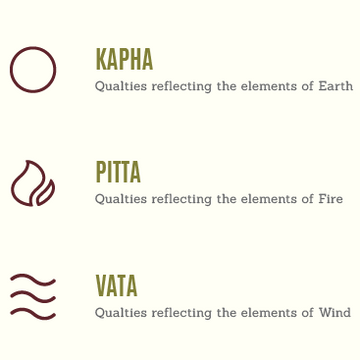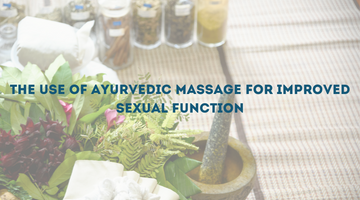
Tridosha comprises the basic 3 fundamental energies (Tri = three, Dosha = the ones that can vitiate) namely Vata (Movement producing humor), Pitta (Metabolism producing humor) and Kapha (Structure producing humor).
The basic constituent 5 elements viz. Ether (Akasiya dravya), Air (Vayavya), Earth (Parthiv dravya), Fire (Tejas dravya) and Water (Apya dravya) compose everything including tridosha. Vata is made up of air and ether, Kapha is made of Earth & Water and Pitta is made of Fire and Water.
Vata is dry, cold, light, subtle, motile, clear and rough in nature, Pitta is oily, sharp, hot, sour, tremulous and pungent while Kapha is heavy, soft, cold, smooth, sweet, steady and sticky in its attributes. They impart corresponding physical and mental traits to human beings with their respective predominance.
Though they are the biological forces and maintain harmony and health when they are in equilibrium but they can lead to disease when they aren’t in balance. Thus the Dosha word here means their vitiated state. They are primarily responsible for the creation, preservation and destruction of the body. The primary locations of Vata are colon, pelvic cavity, large intestine, stomach and hypogastric region. Pitta is found in the small intestine and gastroduodenal junction while Kapha lies in the chest, stomach, tongues, head and joints.
In different stages of life as well as at different times of a 24 hr cycle, one or the other dosha prevails and thus the behavior of the body also shows differences. Such as Kapha in childhood, pitta in youth and vata in old age.
The foods and lifestyle for people with different predominating doshas are as follows-
Foods to balance Vata
Figs, apples, mangoes, papayas, plums, apricots, beetroots, carrot, sweet potatoes, spinach, tomatoes, sprouts, moong, black lentils, rice, wheat etc.
Activities to balance Vata
Lotus pose (Padmasana)
Backward bend (Paschimottasana)
Plough pose (Halasana)
Locust pose (Salabhasana)
Cobra pose (Bhujangasana)
Headstand (Shirshasana)
Oleation (Oil massage)
Foods to balance Pitta
Apples, melons, plum, pear, grapes, cabbage, cucumber, lettuce, peas, parsley, potatoes, barley, white rice etc.
Activities to balance Pitta
Bow pose (Dhanurasana)
Fish pose (Matsyasana)
Shoulder stand (Sarvangasana)
Half wheel (Ardha Chakrasana)
Pranayam (Kapalbhati, Anuloma viloma)
Foods to balance Kapha
Raisins, peaches, cherries, berries, radish, spinach, garlic, cauliflower, carrot, corn, millets etc.
Activities to balance Kapha
Spinal twist (Ardha matsyendrasana)
Lion pose (Sinhasana)
Palm tree pose (Tadasana)
Half wheel (Ardha Chakrasana)
Pranayam (Ujjayi, Bhastrika, Anuloma Viloma)




